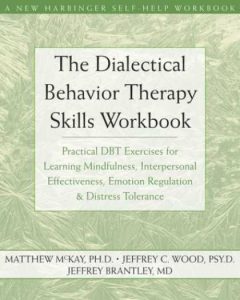VIDEO: Dr. Peter Levine on Somatic Experiencing Approach and Titration
Watch an excerpt from PsychAlive’s exclusive interview with Dr. Peter Levine.
Dr. Peter Levine on the development of the Somatic Experiencing Approach and the concept of titration.
Dr. Peter A. Levine: As I started to work with many people and we would see symptoms often connected with what we would think as being relatively benign experiences: falling off bicycles, being in accidents, having invasive medical procedures, I mean these all seemed like ordinary things. And of course, things like abuse, neglect, molestation, rape, all of these things of course are clear traumas, the trauma of war, those are clear traumas.
But we discoveredthere were so many other things that could cause those effects. And I thought, wait a minute, we have the same part of nervous systems, of our brains, that have to do with survival, that have to do with dealing with predation, with threat, danger, as animals do. And if animals develop the kinds of symptoms we do, the kind of symptoms that Nancy developed, well, they wouldn’t survive, nor would their species.
It’s an evolutionary, it’s a Darwinian Olympic race, you know, if you get the Gold Medal you win. But there is no Silver and there is no Bronze, you either escape or you’re…so if you lose that edge as anybody who has trauma knows, they lose that edge, then it wouldn’t be possible for the animal or the species to survive.
So I realized that animals must have the same kinds of innate mechanisms or they must have innate mechanisms and that we also must have these same innate mechanisms. Well, when I studied animal behavior, and one of the reasons why this image of the tiger came to me, is because my graduate work initially was in the neuro-ethology lab of Donald Wilson who sadly was killed, and it very sad for me. But we were taking kind of an informal graduate seminar and one of the professors was presenting some work on what’s called “tonic immobility.”
When animals are immobilized, they freeze, playing ‘opossum,” if you take a pigeon, a bird, and hold it in your hands and restrain it, even without fear, it stops fighting, it stops moving. And if the animal is frightened, it stays in longer and longer.So I started again doing more research and I’m sure that that image came from that graduate seminar because I realized that she was feeling immobile, and was feeling terrified and that this image of escape came clearly from what animals do after they’ve been in this immobility response, and the predator is gone, they escape.
You see sometimes where…I have some videos showing a cheetah chasing down a gazelle, the cheetah grabs the gazelle, takes the gazelle down to the ground, the gazelle is “dead,” it’s not moving, it appears to be dead and the cheetah is chewing on her neck, its neck. Of course the cheetah is exhausted from the chase, and so the hyenas come in and scare, shoos off the cheetah and then the hyena starts chewing on the gazelle, then the cheetah comes back again and starts getting a little more energy and backing off the hyena, the gazelle gets up and runs away as though nothing had happened.
What happens with people is that we become afraid of the actual sensations of coming out of the immobilization response. Also when animals come out of the immobility response, if the predator is still around, the prey will counter attack. I’ve even seen a mouse counter attack a cat. The cat catches the mouse bats it around, or holds it. The mouse goes into immobility, the cat wants the game to continue so the cat bats it around, tries to revive it, and it (the mouse) gets up and runs as quickly as it can in any direction. But again I’ve seen times when it went right into the cat, hit its nose, or maybe even bit its nose, the cat is completely, you know, dazed for that moment and then away the animal goes.
These sensations, to escape when we come out of the immobility or to counter-attack, this surge of aggression, for most people, that in itself, becomes frightening, so we stop the very things that would take us out of the shock reaction, out of the immobility. We keep ourselves…we perpetuate the immobility response by continually frightening ourselves. So gradually what I would learn, what I would help my clients, learn is that if they could touch into these sensations one drop at a time…
Again this idea of titration: I borrowed the term from chemistry, so if you take, for example, one beaker of hydrochloric acid, very strong acid, another beaker of sodium hydroxide, caustic soda, if you put your finger in either of those, your finger is going to be gone, they’re both extremely —the acid and a base of extreme corrosive ability, capacity. And if you put them together what happens? You get an explosion. But the final result of that explosion is water and salt. Right, not only neutral, but necessities of life.
So I started to think ….but if you’re a smart chemist, you don’t do that exactly. You take one drop at a time, you drop down one drop of the hydrochloric acid into the caustic soda and you get a psssst…an Alka Selzer fizzle, psssst…. another one. And maybe on the 25th drop, all of a sudden, the salt starts to form around the sides and water is released.
Tags: expert interview, Somatic Experiencing Approach, trauma









It is a very good article, explaining about somatic experiencing.